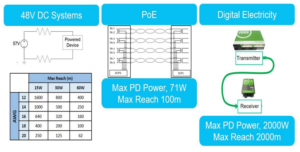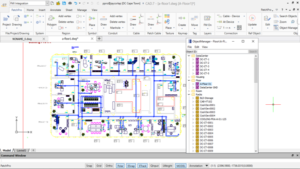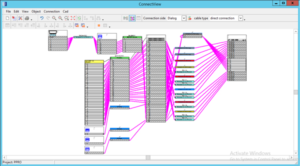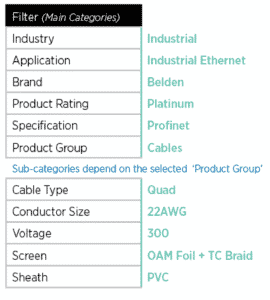Coaxial Cables – What are they, and how are they used?
Written by Krista Thresh
What is a Coaxial Cable?
Coaxial cable is a type of cable that has an inner conductor surrounded by an insulating layer, surrounded by conductive shielding (outer conductor), and a protective outer jacket. Electrical signal flows on the center conductor.
How is a Coaxial Cable used?
Coaxial cable is commonly used by cable operators, telephone companies, and internet providers worldwide to convey data, video, and voice communications to customers. It has also been used extensively within homes.
Coaxial cable has been around for a long time as a technology (since the early 20th century) and has many singular advantages for reliable, accurate transmission.
It also has limitations that will cause it to be replaced in some cases by fiber optic cable, category cable or, sometimes, by wireless signals.
The key to coaxial cable’s success has been its shielded design, which allows the cable’s copper core to transmit data quickly, without succumbing to interference or damage from environmental factors.
What are the two most commonly used Coaxial Cables?
The two most commonly used coaxial cables are RG-6 and RG-11:
- RG stands for “radio grade”, they are also known as RF cables, which stands for “radio frequency”
- RG-6 cable is used for drops shorter than 45m
- RG-11 cable is used for longer drops due to the increased performance over lengths more than 45m
- Broadband cables used in homes have an impedance of 75 ohms
Coaxial drop cables are most commonly terminated using connectors that are designed to the F-type interface specified by SCTE. Over the years F-type interface has evolved significantly, resulting in several different termination technologies including crimp, screw on, and compression.
To make a connection, a male and female connector of the same type is necessary. Male connectors have a center conductor or pin sticking out, depending on the drop cable type, while female connectors have a receptacle for the center conductor or pin to interface with.
In cases of improper termination craft, damaged materials, or loose connections, it’s good to be aware that the result may be signal ingress or egress. This may cause tiling, fuzzy or snowy signals, or even complete signal loss.
The benefits of Coaxial Cables?
There are many benefits of using coaxial cables, but determining whether this cable option is viable for you, depends highly on what the cable can do.
- Can be used for carrying video, audio, and other forms of data
- Work better for shorter distances
- Easy to install
- Very durable
- Best suited for home installations or medium-capacity data transfer networks
- Cost effective









